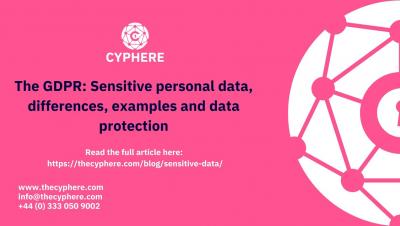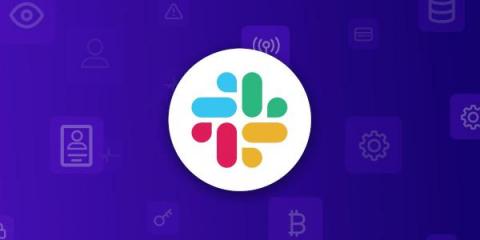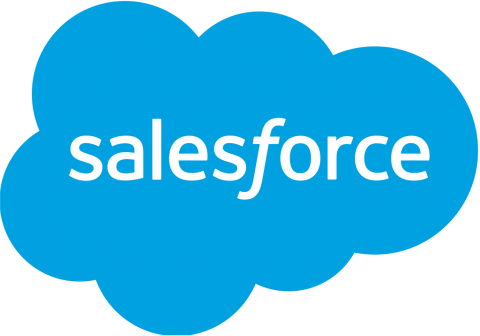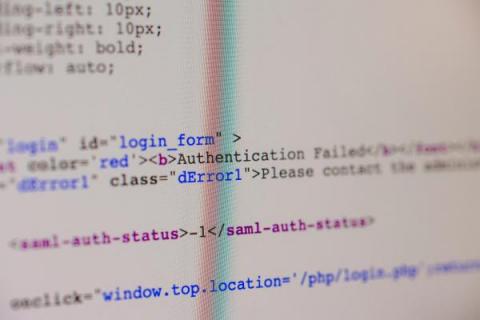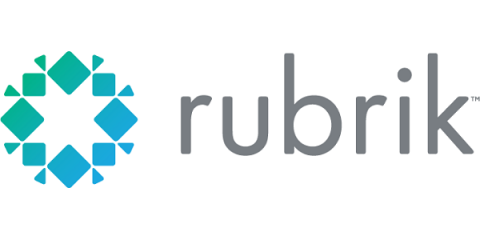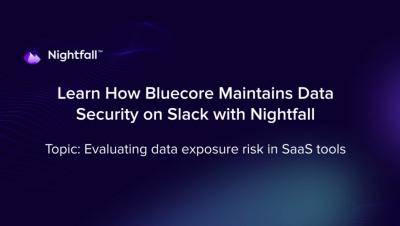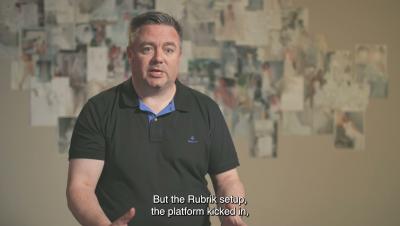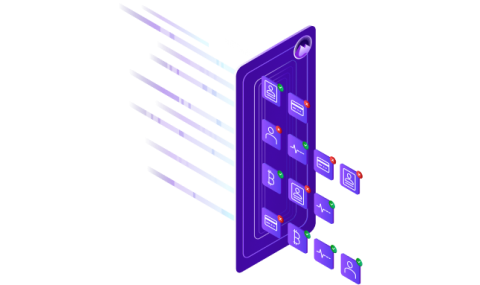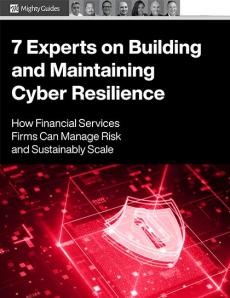Security | Threat Detection | Cyberattacks | DevSecOps | Compliance
December 2021
The Essential Guide to Slack Data Loss Prevention (DLP)
DLP ensures confidential or sensitive information (like credit card numbers, PII, and API keys) isn’t shared outside of Slack by scanning for content within messages and files that break predefined policies. DLP is important for both security and compliance reasons. With DLP in place, you’ll be able to.
Data Loss Prevention (DLP) for Salesforce
Salesforce houses high volumes of customer information, support tickets, quotes and files, synced emails, tasks & notes, and much more. This data can often be accessed by teams across the company who may leverage Salesforce to provide prospects and customers with a great customer experience. However, allowing sensitive data like PII and credit card numbers to live within Salesforce can pose security & compliance risks.
How to evolve your organization into a data-centric security architecture
Defense strategies have evolved as hackers have changed their schemes, and one new approach companies are putting into practice for their security plan is data-centric security. Older security models focused on network infrastructure and hardware security controls while data-centric security concentrates on the data itself. This means data should be secure at all points regardless of where it is stored, processed, or where it is in transit.
Will China's Personal Information Protection Law be a game-changer for data security?
Database Security: How Cloud DLP Can Help Protect Sensitive Data
Some of the most damaging data leaks have resulted from poor database security. In March 2020, 10.88 billion records were stolen from adult video streaming website CAM4’s cloud storage servers. In March 2018, 1.1 billion people were the victim of a breach of the world’s largest biometric database, Aadhaar. And, in April 2021, 533 million users had their information compromised when a Facebook database was leaked on the dark web for free.
Building Endpoint DLP to Detect PII on Your Machine in Real-Time
Endpoint data loss prevention (DLP) discovers, classifies, and protects sensitive data – like PII, credit card numbers, and secrets – that proliferates onto endpoint devices, like your computer or EC2 machines. This is a way to help keep data safe, so that you can detect and stop occurrences of data exfiltration. Our endpoint DLP application will be composed of two core services that will run locally.
Discovering Log4j in Protected Systems Using Rubrik APIs
Rubrik customers have an advantage when it comes to mitigating the log4j crisis. Utilizing our API-first architecture, Rubrik customers can make a single API call to find instances of log4j across their protected systems.
Creating a custom Temporal data convertor for encryption
Nightfall is a data security vendor that integrates with our customers’ third party applications (Slack, Google Drive, Github, Jira etc) to, on a continuous real-time basis, scan all content being added to these applications for sensitive data.
Slack DLP Case Study with Bluecore - Best Practices for Maintaining Slack Data Security (Part 5)
Slack DLP Case Study with Bluecore - Data Leakage in the Context of Slack (Part 1)
Slack DLP Case Study with Bluecore - Evaluating Data Exposure Risk in SaaS Tools (Part 2)
Slack DLP Case Study with Bluecore - The Consequences of Data Exposure in Slack (Part 4)
Slack DLP Case Study with Bluecore - Nightfall Q&A with Bluecore CISO Brent Lassi (Part 6)
Slack DLP Case Study with Bluecore - Identifying Data Security Risks in Slack (Part 3)
Rubrik Data Security Spotlight 2021 Recap
SECUDE Celebrates 25 Years of Innovation and Delivery of Excellence to its Customers
Data Masking Techniques and Best Practices for Data Security
The risks of a data leak have never been higher. Over the last year, data breach costs rose from $3.86 million to $4.24 million, a record high. Data exfiltration, sophisticated hacker attacks, and even insider threats are forcing organizations across the board to take a more sophisticated, multi-layered approach to data security. Enter: data masking. Data masking is a simple technique that can help organizations continue to work productively while keeping sensitive data stored safely.
WED2B Prevents Disruption From Ransomware Attack Using Rubrik
Introducing Rubrik SaaS Support for Microsoft Azure SQL
Since January 2020, Microsoft Azure SQL DB has grown nearly 3x in popularity. This rapid growth comes as no surprise as Platform-as-a-service (PaaS) offerings have many benefits in the migration strategy from traditional SQL Server database workloads. The Microsoft PaaS offering, Azure SQL Database, takes care of mundane tasks once performed by Infrastructure Engineers such as patching operating systems and applying SQL Server updates or critical security patches.
Deploy a File Scanner for Sensitive Data in 40 Lines of Code
In this tutorial, we will create and deploy a server that scans files for sensitive data (like credit card numbers) with Nightfall’s data loss prevention APIs and the Flask framework. The service ingests a local file, scans it for sensitive data with Nightfall, and displays the results in a simple table UI. We’ll deploy the server on Render (a PaaS Heroku alternative) so that you can serve your application publicly in production instead of running it off your local machine.
Deploy a File Scanner with Nightfall Data Loss Prevention (DLP) API
In this tutorial, we will create and deploy a server that scans files for sensitive data (like credit card numbers) with Nightfall’s data loss prevention (DLP) APIs and the Flask framework. The service ingests a local file, scans it for sensitive data with Nightfall, and displays the results in a simple table UI. We’ll deploy the server on Render (a PaaS Heroku alternative) so that you can serve your application publicly in production instead of running it off your local machine.
Efficient and Reliable Protection and Recovery of Nutanix AHV
You run many of your business-critical applications on Nutanix AHV. Protecting your data from cyberattacks and being able to quickly restore your applications, so your business can continue as usual. This is why, at Rubrik, we continue to innovate and expand protection for virtual environments, and we are humbled and proud to be a trusted partner when it comes to protecting businesses.
Rubrik Enhanced Performance, Usability, and Scale for Microsoft SQL and Oracle Database
Microsoft SQL Server and Oracle Database play a critical role in almost every IT environment. That’s why from the beginning, Rubrik has focused on delivering a single platform that converges data protection and data security to ensure you can rapidly and reliably recover when disaster strikes. Our initial release automated the backup of databases with a single SLA policy engine that enabled customers to automatically protect their Microsoft SQL Server and Oracle databases as they were created.
Protect SAP HANA on IBM Power Systems with Rubrik Zero Trust Data Security
SAP HANA is often a database of choice for large enterprises looking to drive more significant insights and quick decision-making through real-time or advanced analytics. As a result, SAP HANA has become key to driving day-to-day operations for many organizations and must be protected to guarantee maximum availability. However, managing this protection is no easy feat.
Simulating Filesystem Tree with Billions of Files: Part 2
Following up on our Simulating Filesystem Tree with Billions of Files series, let's imagine that we want to create a filesystem with 1 billion inodes in memory. At this scale, every single byte used to represent the inode will use 1GB of memory. Just with the inode numbers, each with 8 bytes, will use at least 8GB of memory. If we consider, conservatively, that each inode will use approximately 50 bytes of space, it will not be feasible to store this information in memory.


